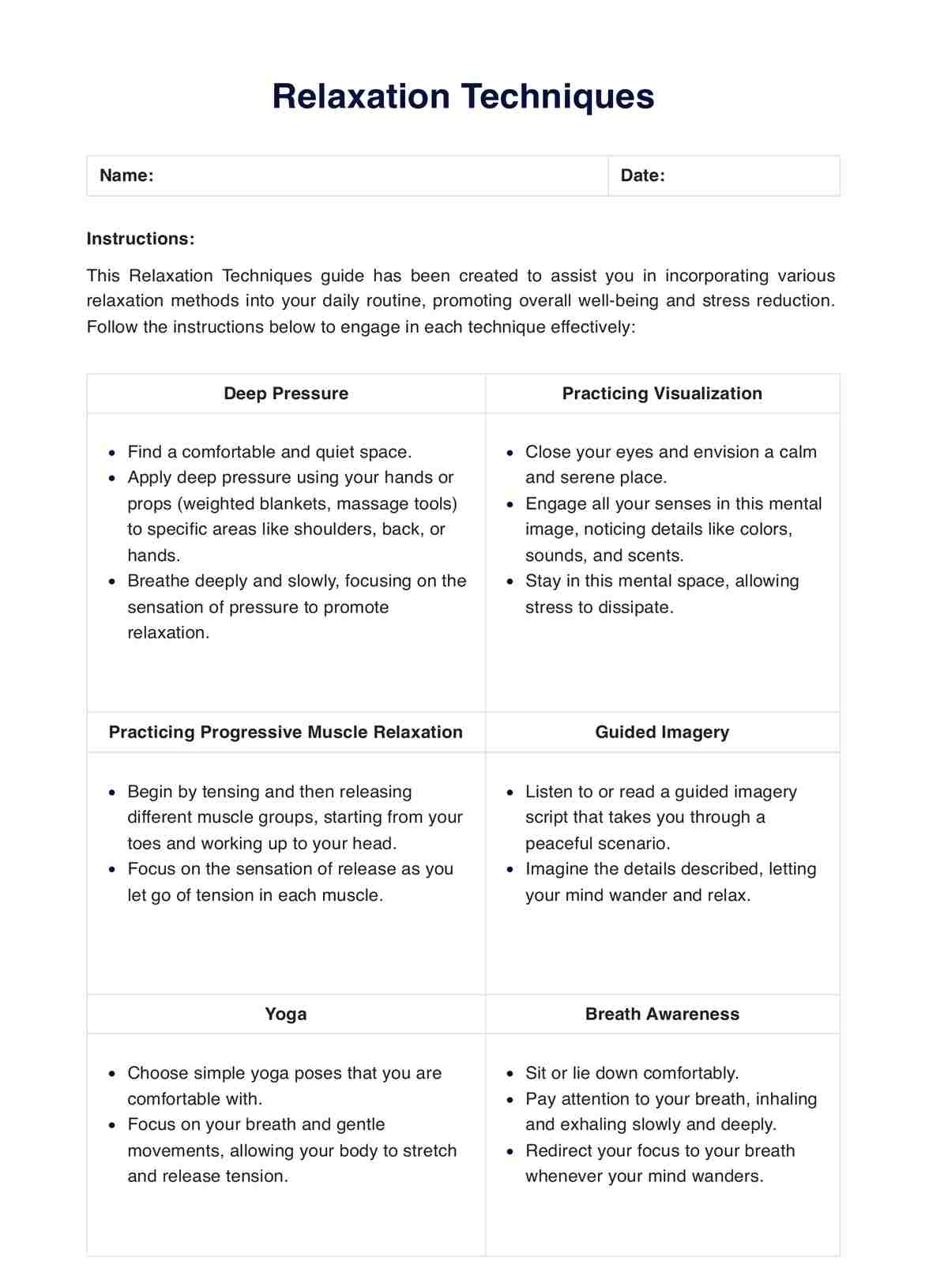Anyone seeking stress relief, improved well-being, or a calming practice can benefit from relaxation techniques.

Relaxation Techniques PDF
Elevate life with our Relaxation Techniques PDF. Download your guide to managing anxiety and stress and fostering psychological well-being.
Use Template
Relaxation Techniques PDF Template
Commonly asked questions
Incorporate these techniques during stressful moments, before sleep, or as a daily routine for consistent mental well-being.
Sessions can vary, but even a few minutes daily can yield noticeable benefits; find a duration that suits your schedule and preferences.
EHR and practice management software
Get started for free
*No credit card required
Free
$0/usd
Unlimited clients
Telehealth
1GB of storage
Client portal text
Automated billing and online payments











